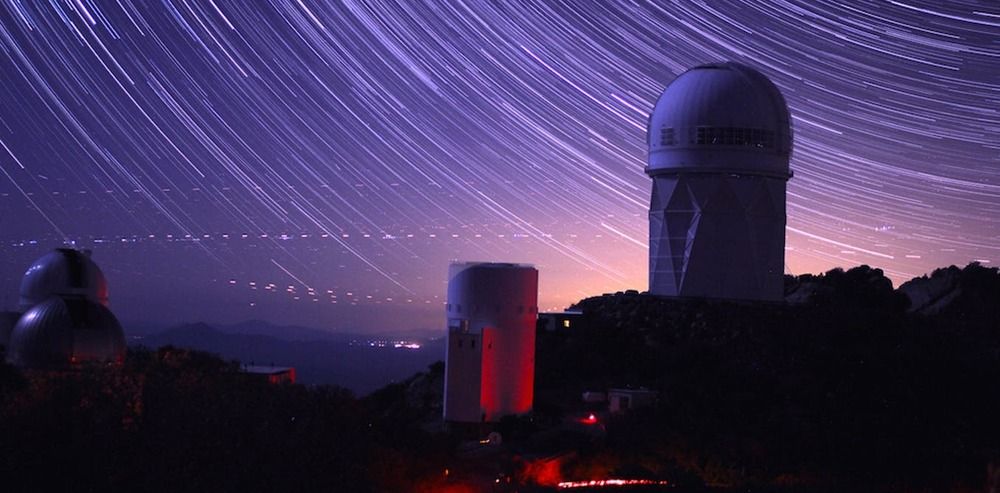Work on an “Internet of brains” takes another step.



Been saying this for years… https://www.wired.com/story/whats-blockchain-good-for-not-mu…zGrONWWHQ#
Not long ago, blockchain technology was touted as a way to track tuna, bypass banks, and preserve property records. Reality has proved a much tougher challenge.
On Friday, October 25, we hosted a Q&A webinar with the team behind MitoMouse, the second MitoSENS program that we are funding. In this webinar, Drs. Aubrey de Grey, Amutha Boominathan, and Matthew “Oki” O’Connor answered viewer questions about the nature of their research and the SENS approach to age-related disease.
There are only a few days left to donate! If you haven’t already, help SENS Research Foundation fund the final stretch goal of this critical research at https://lifespan.io/mitomouse and help bring about the end of mitochondrial dysfunction more quickly.

Using a supercomputing system, MIT researchers have developed a model that captures what web traffic looks like around the world on a given day, which can be used as a measurement tool for internet research and many other applications.
Understanding web traffic patterns at such a large scale, the researchers say, is useful for informing internet policy, identifying and preventing outages, defending against cyberattacks, and designing more efficient computing infrastructure. A paper describing the approach was presented at the recent IEEE High Performance Extreme Computing Conference.
For their work, the researchers gathered the largest publicly available internet traffic dataset, comprising 50 billion data packets exchanged in different locations across the globe over a period of several years.
Chameleons, salamanders and many toads use stored elastic energy to launch their sticky tongues at unsuspecting insects located up to one-and-a-half body lengths away, catching them within a tenth of a second.
Ramses Martinez, an assistant professor in Purdue’s School of Industrial Engineering and in the Weldon School of Biomedical Engineering in Purdue University’s College of Engineering and other Purdue researchers at the FlexiLab have developed a new class of entirely soft robots and actuators capable of re-creating bioinspired high-powered and high-speed motions using stored elastic energy. These robots are fabricated using stretchable polymers similar to rubber bands, with internal pneumatic channels that expand upon pressurization.
The elastic energy of these robots is stored by stretching their body in one or multiple directions during the fabrication process following nature-inspired principles. Similar to the chameleon’s tongue strike, a pre-stressed pneumatic soft robot is capable of expanding five times its own length, catch a live fly beetle and retrieve it in just 120 milliseconds.

Hundreds of millions of people in India depend on farming for their livelihoods, but many of them struggle with losing crops to disease, getting them to market or achieving the right price when they do. Several startups are trying to change that.
Piggybacking on India’s mobile boom, these companies are using smartphones and the internet to help farmers grow, harvest and sell their crops more efficiently. India is self-sufficient in food staples, but faces a constant challenge to feed its population of 1.3 billion and rising. The country accounts for a quarter of the world’s hungry people and is home to over 190 million undernourished people, according to the latest estimates by the United Nations.
“There is a lot of financing and talent which is coming in this space,” says Rikin Gandhi, co-founder and executive director of Digital Green, a social enterprise that began as a research project backed by Microsoft ( MSFT ).


The calls started pouring in soon after word spread that Dr. Valerie Taylor was testing fecal microbiota transplantation — transferring poop from one body to another — for bipolar disorder.
The mental health condition is different from depression. It comes with mania, the “up” swings that can make people feel superhuman. “But so many people with depression called wanting to take part in the study we felt we had an obligation to try,” said Taylor, chief of psychiatry at the University of Calgary.
Two years after spearheading the bipolar study, the first of its kind in the world, Taylor has now launched a second study testing fecal transplants in people with depression, as well as a third for depression in people who also have irritable bowel syndrome.

Wormholes, passageways that connect one universe or time to another, are still only theoretical — but that doesn’t mean physicists aren’t looking for them. In a new study, researchers describe how to find wormholes in the folds of our galaxy.
These hypothetical passageways, created by folding a region of space like a piece of paper, are predicted by Einstein’s theory of general relativity. But they require extreme gravitational conditions, such as those around supermassive black holes.
In the new study, two researchers came up with a method to search for wormholes close to home, around the Milky Way’s central, supermassive black hole, called Sagittarius A*. If a wormhole were to exist around Sagittarius A*, the stars on one side of the passage would be influenced by the gravity of stars on the other side, the researchers said.
